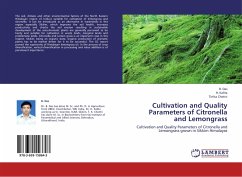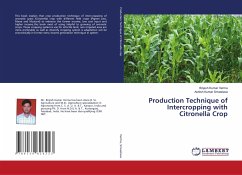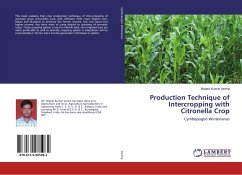The soil, climate and other environmental factors of the North Eastern Himalayan region of India is suitable for cultivation of lemongrass and citronella. It can be introduced as an alternative in wastelands in this region especially Sikkim, which improves the soil health, increases productivity and checks the soil erosion resulting in sustainable development of the area.Aromatic plants are generally perceived to be hardy and suitable for cultivation in waste lands, marginal lands and problematic lands. Citronella and Lemon grass is an important crop in this respect. Sikkim, being an organic state, organic production of aromatic plants has to be market driven for it to be successful. The GC report proved the superiority of Himalayan lemongrass oil. In the process of crop diversification, vertical diversification in processing and value addition is of paramount importance.
Bitte wählen Sie Ihr Anliegen aus.
Rechnungen
Retourenschein anfordern
Bestellstatus
Storno








